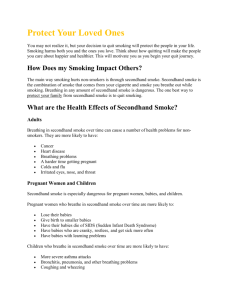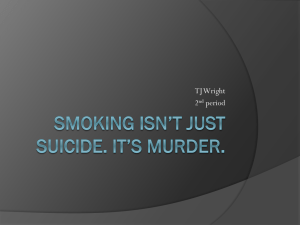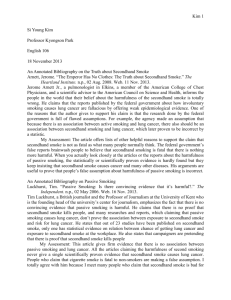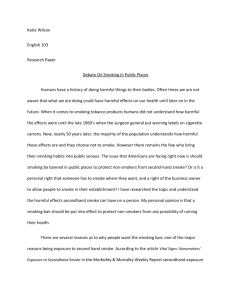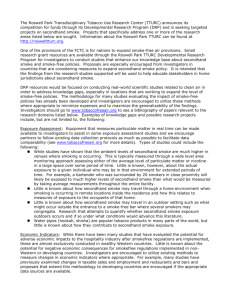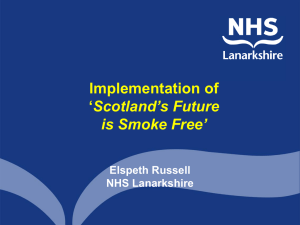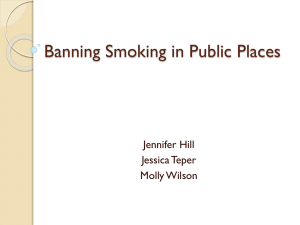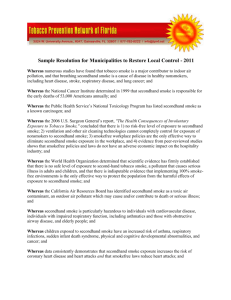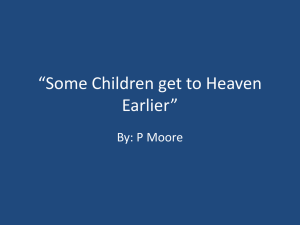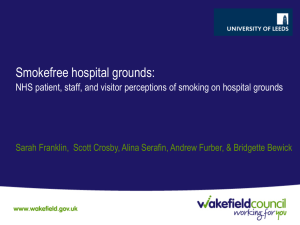Lesson 1 Powerpoint
advertisement
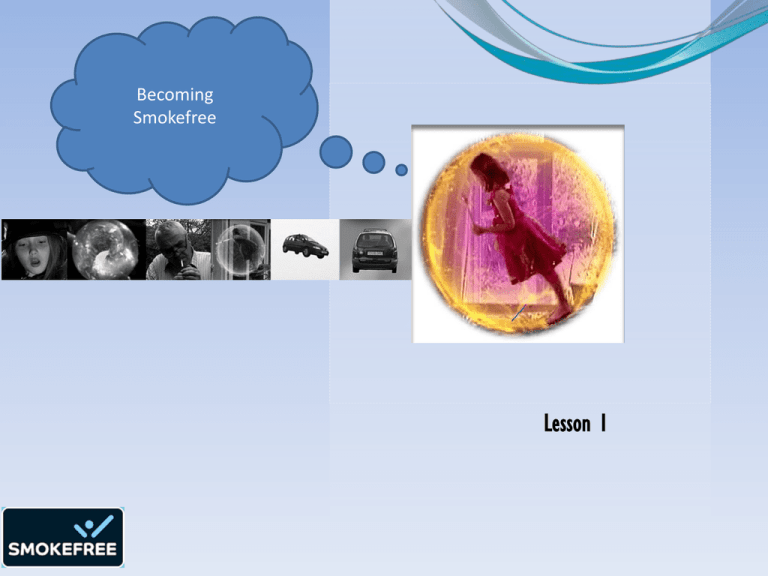
Becoming Smokefree Lesson 1 Activity 1 I can understand the facts around smoking. I can understand what is meant by secondhand and thirdhand smoke. I can understand how secondhand and thirdhand smoke affects others. Steps for Success. • We need to understand the different facts around smoking, so we do not have any misconceptions. • We need to know that secondhand smoke means being affected by someone else’s smoke. • We need to understand that secondhand smoke affects everyone who breathes it in. • We need to understand that thirdhand smoke can remain on surfaces, fabric, clothing and car interiors. Learning Objectives. • If you have any questions or concerns please write them on a piece of paper and put in our concerns box. • Remember we do not discuss any personal information. • Never use names, it is always, “someone I know.” Concern’s Box Facts around smoking. Tobacco smoke contains 4000 chemicals around 50 of which are known to cause cancer. Some of these chemicals are: Tar – a sticky black substance, known to cause both cancer and lung damage. Carbon monoxide – a gas found in car exhaust fumes. Benzene – found in petrol fumes and causes leukaemia. Ethanol – used in anti-freeze. Ammonia – used to embalm dead bodies. Hydrogen cyanide – an industrial pollutant. Arsenic – rat poison. Facts around smoking. When somebody smokes the carbon monoxide in the smoke passes from the lungs into the blood vessels. It affects arteries increasing the likelihood of circulatory problems, strokes and heart attacks. Nicotine is a powerful , addictive drug that affects the brain and the heart. In large quantities it is extremely dangerous. Every year, over 81,400 people in the UK die through smoking tobacco (2009 data). Smoking causes over 3,000 fires every year in the UK. • This film is about the effects of smoking. • At the end of the film discuss with your response partners (or person you are sitting next to), what you think are the key messages in the film. Play film now Hubble Bubble the film! Smoking and young people. • In the UK, over 450 children start smoking every day. • Smoking has been on the increase amongst 11 to 15 year olds. • In Nottinghamshire , over 30,000 children up to the age of 15 years live in a home that is not smokefree Secondhand smokes involves involuntarily breathing in other people’s smoke, either from the burning tip of a cigarette or from smoke that has been inhaled and then exhaled by the smoker. Thirdhand smoke is the toxic particles that build up and can remain on surfaces, fabric, clothing and car interiors long after tobacco has been smoked. • On your sheet draw or write in the bubbles how you think Millie has been affected by secondhand and thirdhand smoke. • Remember passive smoking is secondhand and thirdhand smoke. • Answer the questions on the sheet. Remember to give your evidence from the film. • Think carefully about the last question. What else could Millie do to make the situation better for her? How has secondhand and thirdhand smoke affected Millie? We have learned lots of facts around the dangers of smoking. Fill in your Learning Board. Secondhand and thirdhand smoke is breathing in other people’s smoke from the cigarette, their breath or on clothes and furniture.. Secondhand and thirdhand smoke affects other people’s health. What have we learned?
